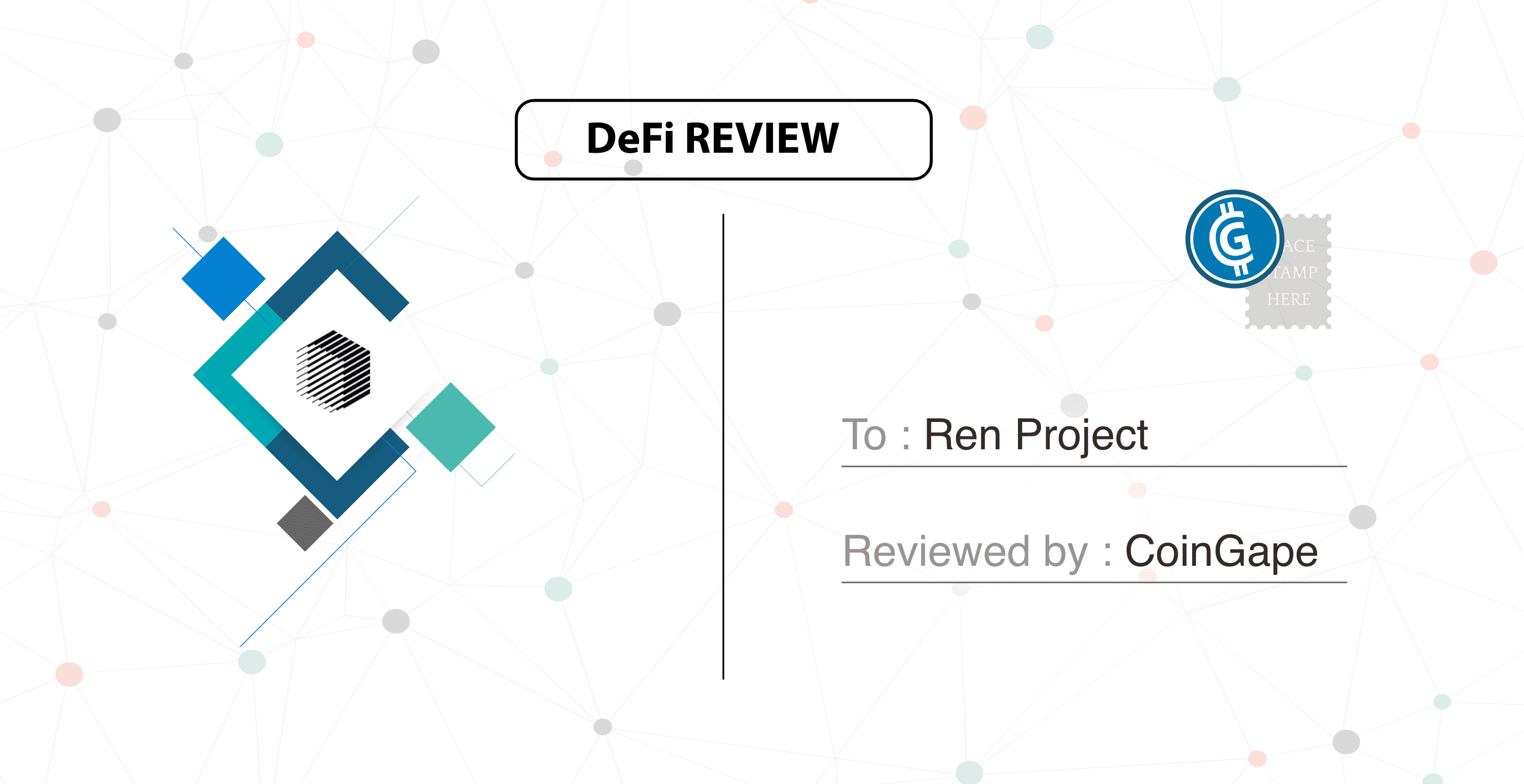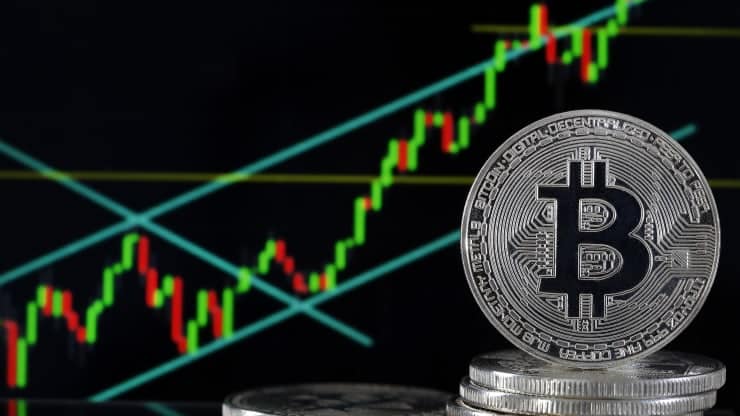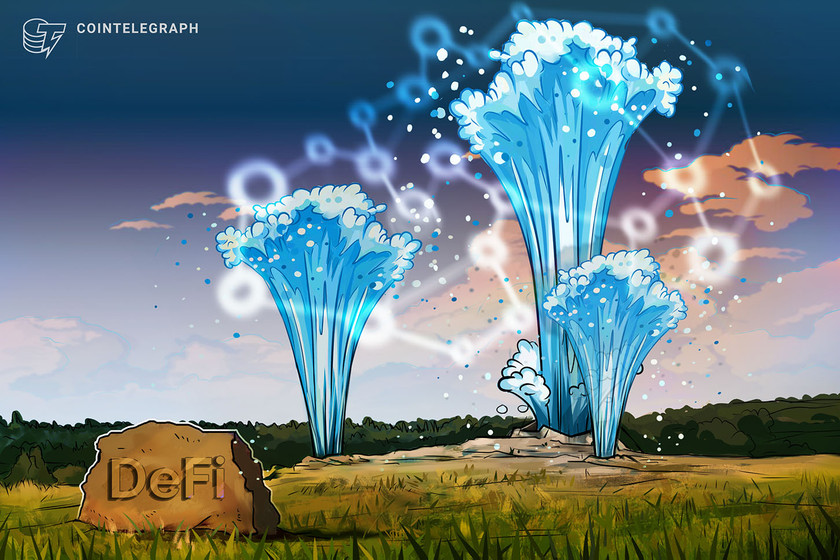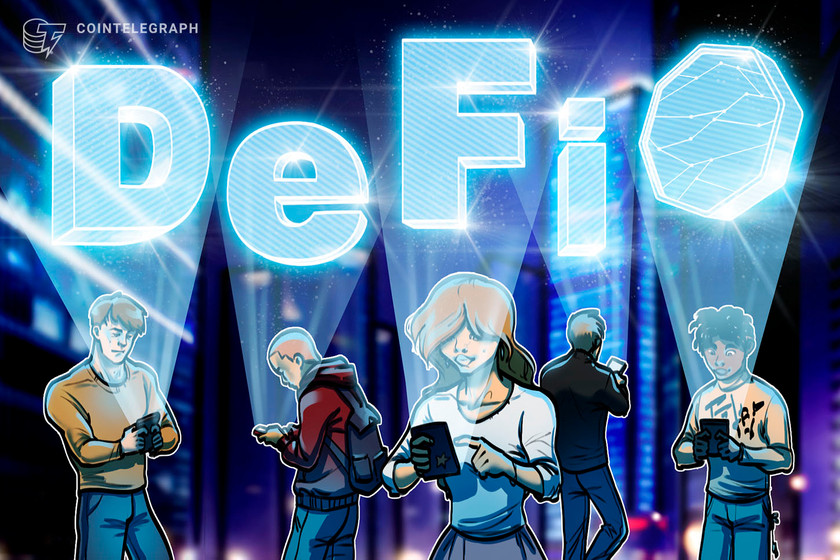Ren Project (REN) – Review, Rating and Complete Analysis
Overview Ticker REN Price 0.369726 USD Market Cap / Market Rank 325,786,963 USD / #51 All time high 0.595017 USD all time low 0.01548000 USD Circulating supply 881,153,018 / 1,000,000,000 Token Type ERC-20 Total Value Locked (TVL) 347,309,762 USD Website https://renproject.io/ Background The Ren project, formally launched in 2017 is one of the earliest DeFi The post Ren Project (REN) – Review, Rating and Complete Analysis appeared first on Coingape.


Overview
| Ticker | REN |
| Price | 0.369726 USD |
| Market Cap / Market Rank | 325,786,963 USD / #51 |
| All time high | 0.595017 USD |
| all time low | 0.01548000 USD |
| Circulating supply |
881,153,018 / 1,000,000,000
|
| Token Type | ERC-20 |
| Total Value Locked (TVL) | 347,309,762 USD |
| Website | https://renproject.io/ |
Background
The Ren project, formally launched in 2017 is one of the earliest DeFi projects. However, it was formally called republic protocol. The project tackles privacy, security, and interoperability in OTC. According to the founders, interoperability, privacy and secured protocol will decentralize OTC.
Consequently, Ren, founded by Taiyang Zhang and Loong Wang, is a response to the lack of support for over-the-counter (OTC) cryptocurrency trading. It allows investors or traders alike to trade the market without disrupting it.
What is Ren Project?
For ease of understanding, Ren makes the crypto transfer between blockchains easy, transparent, and secure in a private model.
Simply put, it is a secure network of virtual computers, RenVM that powers interoperability for decentralized applications thereby enabling cross-chain lending, exchanges, collateralization & more.
How does Ren Project work?
Ren is built on a decentralized virtual machine replicated over thousands of machines: RenVM.
The four core pillars that make RenVM (below) allow for one of the only practical privacy + interoperability solutions that can scale, and is the only solution that allows for private computation over multiple inputs and multiple parties.
Ren leverages RenVM to allow decentralized and trustless dark pools. Before going further to how Ren works, dark pools refer to OTC markets that allow investors to anonymously purchase large amounts of an asset. They could be a legacy market or cryptocurrency.
However, while purchasing anonymously, there comes a lack of trust and security of assets. Hence, the need for a trustless, decentralized, and secured protocol called RenVM.
Similar to a blockchain, RenVM. It is decentralized, allows users to run nodes, as well as governing the virtual machine. Contrary to the legacy system, you can execute scripts offline with a high degree of certainty.
Ren Virtual Machine (RenVM) using a network of “Darknodes” which provide the necessary computing power to identify and process cross-chain cryptocurrency orders.
Trustless cross-chain cryptocurrency on the RenVM is done using a complicated algorithm called the “Shamir Secret Sharing Scheme”, which fragments the orders. Unlike the conventional OTC, fragmented orders are such that the Darknodes do not know the amount or destination of the crypto being transacted. Thus allowing privacy.
How RenVM Works?
As an Ethereum protocol, RenVM executes cross-chain transactions using ERC-20 token, as a utility and an equivalent of the underlying assets. Concurrently, the ERC-20 compliant token allows you to move or swap supporting assets like Bitcoin, ZCash, Bitcoin Cash, etc on the Ethereum blockchain.
The Ren token, REN, allows users perform the following;
- Incentivizes node operators to match orders.
- Pay bonds to the Registrar, allowing traders and nodes to participate in the REN Dark Pool.
What is Ren Project concept?
Ren project is an ideal solution for trustless, secured, decentralized, and anonymous OTC transactions. That said, it leverages several technologies like RenVM among otters to build a robust and sustainable dark pool. Its watchwords are private, open protocol, and interoperable transactions between blockchain.
What Ren Project did differently?
Ren is a complex platform with multiple use cases, but it is ultimately designed to overcome barriers to entry and investment for DeFi projects.
As a plug-in, it allows DeFi projects to bring foreign cryptocurrency assets such as Bitcoin (BTC) and Zcash (ZEC) to their offerings. More broadly, users can in essence swap any token between any two blockchains without middle steps such as using so-called “wrapped” versions of tokens, for example, Wrapped Bitcoin (WBTC) and Wrapped Ethereum (WETH).
RenVM is a network of virtual computers making up a virtual machine. The machines powering the network which makes up RenVM are called Darknodes.
Ren charges various fees for internal operations, but most do not go towards direct profitability, instead of being paid to miners. As an ERC-20 token, REN also attracts varying gas fees to power transactions.
Supported blockchains and assets?
Having the success of Ren project, it is supporting several assets and projects. The majority of them are covered under the umbrella called; Ren Alliance.
Ren Alliance is an initiative that focuses on assets utility, the security of the protocol, and development. Concurrently, the member platforms or assets include Aave, Airswap, Bit Team, Curve Fiance, Matic network, Futureswap, Portal.Network, Labrys, Formatic, Blockpool, among others. However, it is worthy to note that the member alliance constitutes the supporting assets and projects.
Market dominance and dynamics?
At the time of writing, it has a market cap of $250,841,730, Volume: $60,666,663, circulating supply: 885,405,088, and a total supply of 1B REN. and the total value locked is $345M.
Partnership and deliverables
Since formerly launched as republic protocol, Ren boasts of several partnerships. They include but not limited to the following;
- AZTEC protocol, a zero-knowledge privacy protocol, and exchange settlement standard partners Ren to facilitate private balances, transfers, and trades.
- Wyre, a blockchain FX company that operates a global payment infrastructure partner Ren for KYC. They are also assisting in the onboarding of OTC traders to RenEx and providing liquidity to RenEx.
- TrueUSD, a regulatory complying stablecoin brings the regulation-compliant stablecoin to RenEX
- BitGo (multisignature bitcoin wallet service)
- Kyber Network (instant and seamless transactions between platforms)
ICO details
Ren project kicked off a 2 round of ICO sales on Feb 22, 2018. They raised $34M in funding. During the sales, they have many notable investors, including; FBG Capital polychain, Hyperchain Capital, Infinite capital, Houbi Capital, Limitless Crypto Investment, Signum Capital, Aenigma Capital, Synapse Capital, BlockVC, and ZhenFund.
Solutions and killer features.
By adding the private liquidity layer, RenVM, the value can move between blockchains in zero knowledge in complete privacy. Hence, supporting a plug and play, independent dark pools. Concurrently, Ren is a multiple solution protocol. Other solutions include;
- Inter-blockchain Liquidity for DApps.
- Allows transferring any token between any blockchain.
- Access tokens from any blockchain using your existing smart contracts without having to worry about wrapping or unwrapping tokens.
- Infrastructure for connecting the unconnected.
- Use RenVM to expand the capability of existing dApps or create entirely new business cases within the decentralized world.
- It allows cross-chain asset integration into existing DEX such as Bitcoin and Zcash.
- Because it is open-source and non-custodial, there is no counterparty risk.
- It allows multi-collateral lending, non-custodial smart contracts for cross-chain assets.
Pros and Cons of Ren Project
Similar to every other innovative project, Ren has pros and cons alike. The major pros are that it has a lesser chance of flash loan attack, an experienced team, and strong partnership tiers. On the other hand, the swapping blockchain could pose a risk called compounding the risk.
Security
Smart contract wise, audits show that Ren protocol is secure. However, they are operating semi-decentralized OTC solutions. By semi-decentralized, they tend to build a fully working decentralized protocol before allowing users funds on the wallets.
Unlike other Oracle-based DeFi protocol, Ren is Oracle-less. That affords the protocol immune to oracle bugs. However, there could be compounding risks. Compounding risks talks about the risk of an asset, say Bitcoin blockchain on the Ren protocol. That is to say, a user risks bitcoin blockchain challenges while swapping bitcoin.
Token Distribution metrics (Tokonomics)
The Ren token, called REN has a fixed supply cap of 1 billion (1,000,000,000) tokens.it is an ERC-20 compliant token sold during the token sale. During the two rounds of ICO, 60.2% of the tokens were sold to investors. Ren conducted a presale and public token sale in 2018, during which a total of 60.2% of the supply was sold to investors.
Upon successful rounds, it has a reserve fund of 19.9% of the total supply. On the other hand, 9.9% of the fund was allocated internally to advisors, the team, and its founders. However, team tokens came with a two-year lock-up period, with a six-month lock-up for advisor allocations.
Also, 10% of the REN supply is specifically for partnerships, development, and other related activities.
Token utility process is below:
Team Profile?
Ren was notably founded by Taiyang Zhang as Republic Protocol in 2017. Zhang has existing experience in the cryptocurrency space and has co-founded crypto hedge fund Virgil Capital. Another frontline team member is Loong Wang, who was a lead software developer at Neucode and currently the CTO of Ren protocol.
Community acceptance?
Ren project received impressive support from the crypto community. They engage in followership of 24.9K, 1.8k, and 8 188 on Twitter, Reddit, and Telegram respectively.
Throughout the media and listing outlets, the Ren project has a commendable reputation that ys a lot about the viability of Ren solutions.
Project listing
REN is featured and as well listed on several platforms. Among the platforms are; Coingecko, Coinmarketcap, APNews, Coinbase, ABIT.com, Poloniex, Houbi Global, Binance, AEX, Uniswap, Shushwap, OkEx, etc
It is 57 and 58 in rank on Coinmarketcap and Coingecko respectively. And available on the following exchanges:
Binance, Coinbase pro, OKEx, Huobi, MXC, Gemini, Uniswap, Sushiswap, Balance and more.
Competitor?
The Ren project has several competitors. However, there seems to be no direct competitor that offers all their solutions including liquidity, interoperability, privacy, etc. therefore, you will learn Ren competitor in terms of specific solutions.
Ren interoperable competitors are Cosmos (ATOM), Polkadot (DOT), Aion (AION), and RootStock (RSK)
Bitcoin tokens and bridges competitors are Synthetix, Keep, pTokens, and TokenIon
**Average Rating 7.6/10
A note to investors
From the team viability, management, technology, and partnerships, there is an indication that Ren has a good future. However, it is left for the team to meet up the interoperability needs and the rising security concerns inherent to DeFi protocols.
FAQs:
Is the REN audited?
Yes
Is it open-source, and non-custodial?
Yes.
Is it decentralized?
It intends to achieve decentralization but not yet.
Is the project Audited from reputable security auditors?
Ren smart contract is audited in October 2018 by: ChainSecurity
Has the contract been verified on Etherescan?
Yes, it is verifiable.
What is Ren registered and based?
Singapore
The post Ren Project (REN) – Review, Rating and Complete Analysis appeared first on Coingape.


















